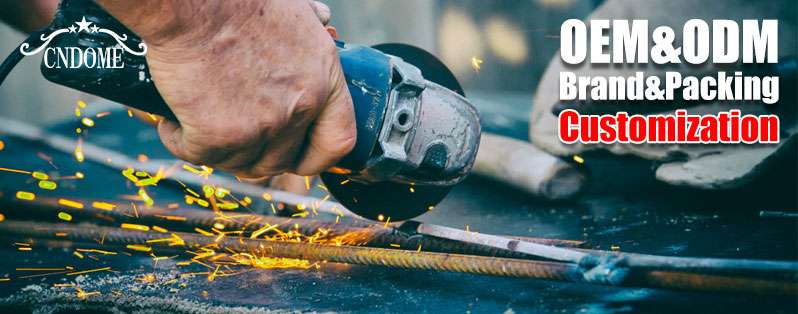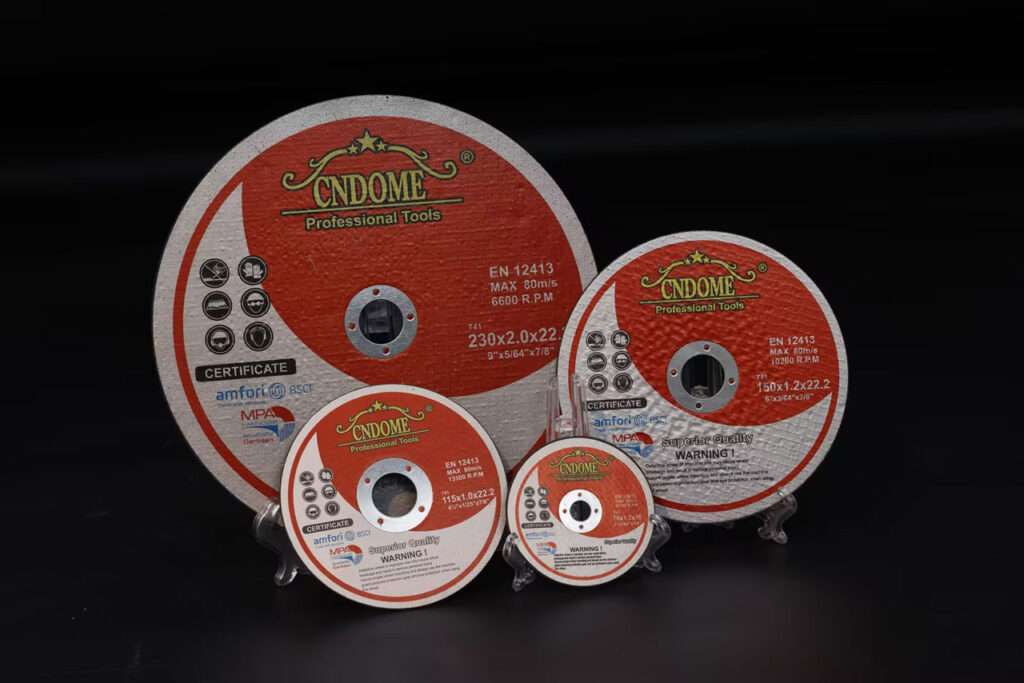When working with stainless steel (also known as Inox), selecting the right cutting disc is essential for achieving clean, efficient cuts while preserving the integrity of the material. In this blog, we will explore the features, benefits, and considerations involved in choosing the right cutting disc for Inox.
1. Why Choose a Special Cutting Disc for Inox?
Inox is a hard material that generates heat during cutting. Using a standard cutting disc can lead to material contamination, heat discoloration, and reduced corrosion resistance. Specialized cutting discs for Inox are designed to prevent these issues. They are free from iron, sulfur, and chlorine, which are crucial to avoid compromising the stainless steel’s anti-corrosion properties.
2. Key Features of Inox Cutting Discs
- Free of Contaminants: Inox cutting discs are formulated to be free from harmful elements like iron and sulfur to prevent contamination of the stainless steel.
- Thin Profile: Typically, discs for Inox are thinner (1.0mm to 1.6mm), allowing for faster cutting with less friction. This reduces heat generation, avoiding burn marks and discoloration on the material.
- Fast and Clean Cutting: These discs offer precise, burr-free cuts, reducing the need for secondary processes such as deburring or grinding.
- Cool Cutting: The reduced heat buildup minimizes the risk of warping and preserves the material’s original properties.
3. Types of Cutting Discs for Inox
- Flat (Type 1) Cutting Discs: Ideal for straight cuts, flat discs provide the greatest cutting surface contact for smooth and consistent performance.
- Depressed Center (Type 27) Cutting Discs: These are slightly thicker and are better for cutting through thicker Inox sheets or profiles, offering a balance between precision and durability.
4. Applications of Inox Cutting Discs
- Metal Fabrication: Cutting stainless steel sheets, pipes, and bars in metalworking environments.
- Construction: For precise cuts in stainless steel structural components.
- Automotive and Aerospace: Used in manufacturing and repairs where stainless steel components are common.
- Food Processing Equipment: Stainless steel is widely used in food industry machinery, where cutting discs for Inox ensure a hygienic and corrosion-resistant finish.
5. Tips for Effective Cutting
- Use High-Speed Tools: Ensure your angle grinder or cutting machine is running at the optimal speed for cutting discs (often 11,000-13,000 RPM for 4.5” discs). A higher speed provides smoother cuts.
- Consistent Pressure: Avoid excessive pressure while cutting. Allow the disc to do the work and maintain a steady hand to avoid overloading the disc.
- Safety Precautions: Always wear appropriate protective gear such as safety goggles, gloves, and a mask to protect from sparks and fine metal particles.
Conclusion
Choosing the right cutting disc for Inox ensures that your stainless steel materials retain their corrosion resistance and aesthetic appeal. By using specialized discs, you can achieve fast, clean, and cool cuts, minimizing post-cutting processing and ensuring high-quality results. Whether you are working in fabrication, construction, or automotive repair, investing in quality Inox cutting discs will enhance your cutting precision and efficiency.



